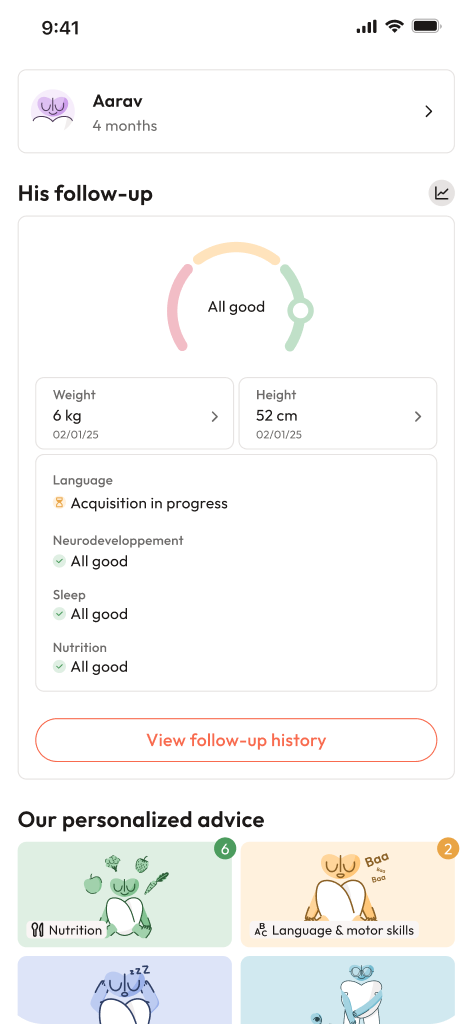Pregnancy progesterone. These two words alone sont enough to awaken a flood of questions in the minds of expecting parents—uncertainty, curiosity, often a flicker of worry. Will my levels be enough? Why is everyone talking of “supplements” and “luteal support”? And, of course, does a low result mean trouble for my baby? Very real, these feelings; you are not alone in wondering what is happening behind the medical curtain. Pregnancy is a journey full of anticipation, but also dotted with moments demanding more answers than comfort. Here, pregnancy progesterone steps into the spotlight.
Let’s break down what matters: the hormone’s role in helping an embryo find its soft landing, keeping the uterus soothed, and preparing the body for new life. Sometimes, numbers on a test report can look confusing, clashing with feelings of hope and fear. Is it all about the numbers, the supplement, or something more delicate and complex? Get ready for science, practical tips, what clinical studies actually show, and many down-to-earth suggestions for everyday life with pregnancy progesterone.
The unique role of progesterone in pregnancy
Why does pregnancy progesterone matter so much?
At the very beginning, progesterone hormone works quietly yet decisively. This natural steroid, first coming from the corpus luteum after ovulation, then shifting to the placenta by about 10–12 weeks, doesn’t just support—but actively transforms—the uterine lining into a nutrient-rich, welcoming bed for the new embryo. Call it the “baby’s nest.” Feel the medical poetry: this hormone doesn’t just build; it shields, modulates, and sustains.
But its mission doesn’t end at implantation. Experience shows progesterone keeps the uterine muscle relaxed, reducing those risky early contractions. It plays another, equally subtle, role—helping the maternal immune system tolerate the developing fetus, which carries half of its genetic material from the father! Think of it as a microscopic peacemaking force. It also thickens cervical mucus, creating a durable plug, a gatekeeper protecting the uterus from infection. Lest we forget, pregnancy progesterone participates in prepping your breasts, shaping the ducts and alveoli for future breastfeeding—which waits in the wings until birth itself.
Cycle and hormone dance—what really happens?
Curious about timing? Right after ovulation, the corpus luteum produces progesterone, spurred on by the pregnancy hormone hCG (human chorionic gonadotrophin). By weeks 8–12, the placenta takes over—a transition called the luteal–placental shift. This explains the gradual rise in pregnancy progesterone in early weeks.
Ever hear about luteal phase insufficiency? Sometimes, a sudden fall in progesterone after ovulation might cause an early bleed, even before your period would be expected. Not always a medical emergency, but something to discuss if it’s a recurring issue.
Production and “normal” levels: what should you expect?
It’s tempting to look for one magic number. But the reality is, blood levels of serum progesterone during pregnancy swing widely depending on the lab, the test used, and your stage of gestation. In early weeks, ovarian production—with help from hCG—keeps progesterone high, then placental production soars. High levels are needed to maintain uterine calm as the baby grows.
Here’s the catch: a single measurement rarely tells the full story. No panic if your report seems borderline. Comparing with the lab’s reference range, noting gestational age, and following trends—not isolated numbers—is what matters. Serial hCG values and ultrasound findings, taken together, offer a more nuanced picture.
Practical tip: Always ask your clinician which lab test was used and the precise reference interval. If a value is borderline, question whether a repeat or a different test would be more useful before acting.
Measuring, testing, and making sense of results
When does a test help?
Early pregnancy bleeding? A history of recurrent pregnancy loss? IVF cycle? Ambiguous ultrasound? In these cases, measuring pregnancy progesterone can shine, but only as a part of a much wider assessment. Serial hCG, detailed ultrasound, the clinical context—all are needed for safe decisions.
Vaginal, oral, or injectable progesterone can boost your levels—be sure to inform your doctor before any test. And an unexpected player? High-dose biotin (a common supplement) can mess with certain lab tests. Be transparent about every medicine and supplement.
A persistently low result may reflect a pregnancy that’s not developing as expected—sometimes as a marker, not the root cause. Context, always context.
To ask your clinician: Will this result change my management plan? If not, is it worth the anxiety?
Three steps for early pregnancy bleeding
- Serial β‑hCG (repeated after 48 hours)
- Transvaginal ultrasound, if possible for your dates
- Repeat progesterone only if it will impact the next step
When pregnancy progesterone is low: what does it mean?
The idea of “luteal phase deficiency” as a cause for every low level isn’t universally accepted. Often, a low value in early pregnancy is more a signpost of a failing pregnancy (nonviable, no visible embryo, possibly ectopic) rather than a culprit. Under-the-hood conditions—thyroid disease, high prolactin, or medicines that speed up hormone breakdown in the liver—can also come into the equation.
Practical question: Does this measurement require urgent treatment, or should we pause and watch the trends a few days longer?
Supplementation: when, why and how?
Assisted reproduction
If you’re on fertility treatments like IVF, ICSI, or using frozen embryos, pregnancy progesterone support is practically a routine. Ovarian stimulation or pre-planned cycles can reduce or bypass your own corpus luteum, so luteal support is necessary—usually starting around embryo transfer and continuing until weeks 10–12.
Bleeding in early pregnancy: is progesterone a cure-all?
Large research, like the PRISM trial, found that adding progesterone for all women with first-trimester bleeding didn’t help across the board. There may be targeted benefit for women with a history of recurrent loss, but not as a blanket solution. Decision-making is best when shared, informed, and reviewed frequently.
Multiple miscarriages
In women with two or more early miscarriages, especially if current pregnancy is also complicated by bleeding, progesterone can be considered as part of a bigger plan—along with anatomical, hormonal, and genetic investigations.
Preventing preterm birth: the short cervix story
When a transvaginal ultrasound at 18–24 weeks reveals that the cervix is short, using vaginal pregnancy progesterone has shown real benefit in some studies to reduce the risk of early birth. Not recommended for every expectant mother—only with confirmed short cervix and typically in singleton pregnancies.
17‑OHPC: a change in practice
Some might have heard of 17-hydroxyprogesterone caproate (a synthetic cousin). After more research, especially the large PROLONG trial, enthusiasm waned, with its use now restricted in more countries.
Which form, which route, and why?
- Vaginal progesterone: Gels or suppositories, best for direct action on the uterus, causing less general side effects. Often used for short cervix and ART.
- Oral micronized progesterone: Swallowed, convenient but can make you sleepy or dizzy—taking it at night often helps.
- Dydrogesterone: Another synthetic option in some settings, depending on protocol and provider preference.
- Intramuscular injection: Sometimes chosen for its steady release—less pleasant, reserved for special IVF situations.
- Subcutaneous injections: Alternative to intramuscular, mainly in advanced ART scenarios.
Practical tip: Vaginal doses at bedtime mean less leakage in the day; pantyliners help manage any discharge. Pick an option you can stick to, and don’t hesitate to discuss a swap if you struggle with side effects. Consistency matters more than perfection.
Doses, duration, and the right time to stop
- Standard ART: 200–400 mg of vaginal progesterone daily, begun around embryo transfer and continuing to week 10–12.
- Short cervix: Start after diagnosis (usually week 18–24), often continue till 34–36 weeks.
- To stop: Your clinician might pause or taper around the end of the first trimester in IVF after the placenta takes over. The rest of pregnancy management depends on ongoing risk, cervical exams, and the presence or absence of labor signs.
Does pregnancy progesterone really work? Weighing the evidence
- Fertility treatments: Robust positive evidence—progesterone improves outcomes when ovaries are stimulated or suppressed.
- Bleeding in the first weeks: Blanket use won’t help everyone, but may aid women with a recurring pattern of miscarriage.
- Preterm birth (short cervix): Strong studies and guidelines support vaginal progesterone to extend pregnancy when the cervix is short.
- 17‑OHPC: Effectiveness in preventing preterm birth is now doubted, use has been scaled back globally.
Side effects, risk factors, and when to act fast
Typical, usually mild:
- Nausea, headache, fatigue, mood changes
- Daytime drowsiness (especially oral)
- Breast tenderness or local discomfort
- Vaginal discharge
- Fluid retention, mild bloating
- Pain or redness at injection sites
Red flags (consult urgently):
- Severe allergic reaction
- Chest pain, breathlessness, or high fever
- Pronounced swelling
Precautions:
- Existing liver trouble, blood clots, unexplained bleeding, hormone-sensitive tumors, or obstetric cholestasis—share your full health history for safety.
Handy tip: A brief symptom diary (route, dose, side effects) is great for tracking how you react. Revisit doses or routes before stopping abruptly.
Everyday practicalities with pregnancy progesterone
Keeping it simple works best. Swallow your pill or insert your capsule/gels at the same time each day. With oral forms, opt for evenings to dodge sleepiness. Vaginal form? Expect some leak—pantyliners are your friend! No self-prescription, always keep an updated medicines list, and disclose everything before tests.
Lactation and postpartum: what does pregnancy progesterone do?
Progesterone helps organize breast tissue in pregnancy, but waits till birth to “release the brakes” and allow active milk flow. Taking supplemental progesterone will not prevent breastfeeding. Got further questions? A maternity care provider or lactation counsellor will gladly clarify.
Linking progesterone, miscarriage, and preterm birth: an evidence-based outlook
More often than not, early miscarriages come from chromosome issues in the embryo—something no amount of progesterone can reverse. But when losses keep repeating, a thorough check (structure, hormones, immunity, genetics) is in order, with targeted progesterone a part of the toolbox for select cases, not the only fix.
For preterm birth, mid-pregnancy scans between 18–24 weeks, focusing on cervical length, reveal who’s truly at risk. Here, vaginal progesterone wins support—but only for those with independently confirmed short cervix. Not for universal prevention.
Good practice—what do guidelines say?
Major global medical groups (ESHRE, RCOG, ACOG, NICE, CNGOF) stand behind progesterone for ART and short cervix, with the caveat: not all early bleeding situations will benefit. For 17‑OHPC, caution is now the norm after its effectiveness was questioned. National protocols shift as new findings emerge.
What to clarify with your consultant:
- Why this medication, now?
- What formulation and dose will I be using?
- How will benefits and side effects be monitored, and how do we know when to stop or change strategy?
Special cases: what if there are extra risk factors?
Polycystic ovary syndrome, abnormal thyroid function, or high prolactin levels can all impact how your body handles the luteal phase. Correcting these may be the simplest way to optimize your pregnancy progesterone naturally. Twins, triplets, or being an older mother? Each situation deserves a plan tailored to your own risks, and automatic supplementation is not always the answer.
A word on supplements: Even “harmless” options like high-dose biotin can alter lab results—disclose everything to your care provider for the best, cleanest interpretation.
Checklist, warning signs and practical takeaways
First-trimester bleeding: What to do?
- Call your doctor or maternity centre without delay
- Get β‑hCG measured and repeated in 48 hours
- Ask about a transvaginal ultrasound if appropriate
- Discuss the option and limits of progesterone, especially with any history of loss
Preterm birth prevention: Watch for
- Cervical length scan by vaginal ultrasound, weeks 18–24
- If cervix is short, start vaginal pregnancy progesterone and plan closer monitoring
- Warning signs: regular contractions, pelvic pressure, watery discharge (possible membrane rupture)
Glossary
- Corpus luteum: Temporary ovarian gland making progesterone after ovulation
- Luteal phase: Time after ovulation when progesterone rises
- Luteal–placental shift: When placenta takes over progesterone production
- Decidualization: Uterine lining transformation supporting implantation
- hCG: Hormone from baby’s placenta supporting corpus luteum
- Cervical length: Ultrasound measurement identifying preterm birth risk
- Threatened miscarriage: Bleeding early in pregnancy with the cervix still closed
- Micronized progesterone: Natural hormone reformulated for oral or vaginal use
- Progestin: Synthetic hormone mimicking progesterone
- 17‑OHPC: Synthetic progesterone, use now limited after new studies
Key Takeaways
Pregnancy progesterone is a true champion—quietly preparing the womb, calming uterine muscles, assisting breast preparation, and stalling milk production until your newborn arrives. Numbers on a test? Only part of the picture; context and trends matter more than isolated results. For those undergoing ART or with a short cervix, supplementation is backed by sound evidence. In early bleeds, the benefits tilt in favour of those with recurrent loss, not everyone. Its forms are adaptable: vaginal, oral, injectable, each with care points for timing and side effects. Side effects are often limited; discuss your whole medical history for safe and effective use. Personalised, data-driven, accompanied by expert follow-up—this is how pregnancy progesterone supports families.
Seeking reassurance, guidance, or have more complex questions about your pregnancy and hormone support? Dedicated professionals and digital health platforms are there for you. For tailored advice and free health questionnaires for your child, download the Heloa app.
Questions Parents Ask
What are typical serum progesterone ranges in early pregnancy, and how should I read my numbers?
Feeling uneasy looking at your blood test report? Perfectly understandable. There’s no single “normal” chart—labs vary in reference intervals, equipment, and pregnancy progesterone levels change as the pregnancy advances. Most doctors use certain thresholds: less than 5 ng/mL often raises concern, above 20–25 ng/mL tends to reassure, but everything depends on how you are feeling, your ultrasound and serial hCG values. Ask about the lab’s reference range, and remember—repeating a test or using imaging usually offers more clarity than just a single figure.
Can high progesterone harm the baby or pregnancy?
Breathing easier: natural micronized progesterone, even in higher doses prescribed for pregnancy, hasn’t been linked to increased birth defects in well-conducted studies. While side effects (drowsiness, breast changes, water retention) can trouble mothers, no evidence suggests harm for the fetus when used as intended. However, specific synthetic progestins can differ, so best clarify the exact medication with your clinician, who can personalize the risk–benefit analysis for you.
How long does progesterone from supplements stay in my body, and when should I tell the team before testing?
It depends on the route: vaginal products mostly exit the bloodstream within 24–48 hours, oral clears within a day or so, but long-acting ejxjections (intramuscular) can linger for days, sometimes even weeks. Always inform your provider about every supplement or dose before any blood test—sometimes, a short pause or a change in testing timing can make the results easier to interpret, without risking your health or the baby’s. Prefer transparency for best care.
What should I do if I experience bleeding in early pregnancy?
First, don’t wait—reach out promptly to your healthcare professional. Often, you’ll need a repeat beta hCG blood test, and possibly a transvaginal ultrasound to check for viability. If you have a history of recurrent loss or other risk factors, discuss if pregnancy progesterone makes sense for your context. Safety, not delay, is the guiding principle here.
Who can benefit most from pregnancy progesterone supplementation?
Women using ART, those identified with a short cervix in the second trimester, and some with a pattern of recurrent first-trimester loss. Routine supplementation, especially after a single episode of bleeding, doesn’t help everyone according to current research. Personalization, ongoing assessment, and clinician guidance matter most.
Is it safe to breastfeed after taking pregnancy progesterone?
Absolutely. Progesterone during pregnancy designs the groundwork inside the breast, but delays full lactation until levels drop after birth. Supplemental intake won’t block your ability to nurse.
How do I know if I should start or stop progesterone in my pregnancy?
Scrutinize the reason with your care provider: evidence is strong for certain scenarios (ART, confirmed short cervix), less so for routine use. Discuss how long to continue, how monitoring is done, and what parameters will signal a safe stop. Don’t rush changes, especially without clinical review.
Do all women with preterm birth risk need progesterone?
No. Only women with objectively confirmed short cervix—via transvaginal scan, usually around weeks 18–24—are shown to benefit. It’s not given on the basis of history alone, nor for multiple gestations without other risk indicators.
For further information and personalised support, download the Heloa app and connect with caring specialists in pregnancy and early parenthood.

Further reading :









